English speakers, scroll down!
Als ich nach knapp 10 Stunden aus dem Flieger steige, schlägt mir die stehende Luft wie eine Faust heiß und brennend ins Gesicht. Ich lächle unwillkürlich: Hier bin ich, Sri Lanka! Doch bis ich wirklich an meinem ersten Etappenziel, der im zentralen Gebirge der Insel gelegenen Stadt Kandy, ankomme, wird es noch eine ganze Weile dauern. Kein Problem: Rucksack schultern und raus aus dem Flughafengebäude.
Aufgrund eines buddhistischen Feiertags, so erzählen mir nach der Ankunft sämtliche Flughafenmitarbeiter, fahren keinerlei Busse; es ist schwer zu sagen, ob das stimmt oder ob die Damen und Herren lediglich besonders gut mit den Taxifahrern befreundet sind, die wenige Meter weiter mehr oder weniger aufdringlich um Fahrgäste buhlen. Tatsächlich wird mir auch an der Busstation nur mit einem Achselzucken begegnet, wenn überhaupt, dann fahren die Busse nur unregelmäßig, und schließlich handele ich gemeinsam mit einem Chinesen mit demselben Fahrtziel einen annehmbaren Preis für die Taxifahrt von Colombo nach Kandy aus, die angeblich zwei Stunden dauern soll.
Mehr als drei Stunden später sind wir immer noch nicht in Kandy angekommen, aber das macht überhaupt nichts. An jeder zweiten Straßenecke halten wir an und werden zur Feier des Tages mit Säften, eingelegten Kichererbsen oder Nüssen beschenkt; sie stillen den Hunger und knüpfen besonders starke Geduldsfäden. Es war die richtige Entscheidung, ein Taxi zu nehmen, der Fahrtwind zerzaust durch das offene Fenster meine Haare, erfrischt mein Gesicht und bringt das typische Indien-Gefühl mit sich, das ich so liebe. Ich erinnere mich an Fahrten durch Goas Wälder, die Dörfer dort sehen ähnlich aus und die Menschen werfen neugierige Blicke in unsere Richtung. Wir kommen verhältnismäßig schnell voran, überholen regelmäßig Busse, die sich ächzend die kurvigen Straßen bergauf quälen. Sie fahren also doch – aber im selbst für Sri Lanka ungewöhnlich dichten Verkehr noch langsamer als wir.
Am Nachmittag schließlich habe ich mein Zimmer im Hostel bezogen, mein Gepäck abgestellt und endlich, endlich geduscht. Kandy ist in kurzer Zeit erlaufen, der künstliche See, um den sich alles zu zentrieren scheint, macht die zweitgrößte Stadt Sri Lankas zu einem hübschen Örtchen, Touristen wie Einheimische spazieren in der Nachmittagssonne am Ufer entlang. Kandy gilt als das kulturelle Zentrum Sri Lankas, und diesen Status hat die Stadt scheinbar ausschließlich der Tempelanlage auf der anderen Seite des Sees zu verdanken. Der Temple of the Sacred Tooth, der zweite Tempel mit einem Zahn des Buddhas den ich besuche, füllt sich unaufhörlich mit Menschen und lockt auch mich, spätestens, als am ersten Abend unzählige Lichter die Straßen, den Tempel und die vier Schreine um ihn herum erleuchten.
Vesakh im Sri Dalada Maligawa – Fest der Erleuchtung im Temple of the Sacred Tooth in Kandy
Vesakh ist der wichtigste Feiertag des Buddhismus und zelebriert die Geburt, die Erleuchtung und das vollkommene Verlöschen von Buddha Siddharta Gautama, mit dem er aus dem Samsara, dem Kreislauf der Wiedergeburt, ausgetreten ist. Das Fest wird mit einer Puja (Zeremonie) und verschiedenen Prozessionen begangen, zu denen viele Buddhisten ganz in Weiß gekleidet erscheinen. Der Tempelbesuch ist ein Highlight im buddhistischen, aber auch im gesellschaftlichen Kalender, ein Familienausflug, ein echtes Event. Ich bekomme eine Gänsehaut, als ich nach meinem Besuch am Nachmittag abends zurückkehre und den hell erleuchteten Tempel und seine Besucher sehe.
Teil der Puja zum Vesakh sind unter anderem Blumen-, Licht- und Räucheropfer. Die Lichtopfer (Padipapuja) habe ich überall in der Stadt gesehen, auch schon am Abend zuvor und auf dem Weg von Colombo nach Kandy waren mir überall Laternen und Lampions aufgefallen. Die Blumenopfer (Pupphapuja) sind ein ganz klassischer Bestandteil der buddhistischen wie auch der hinduistischen Religion und symbolisieren, dass auch der menschliche Körper wie eine Blume verwelken wird. Die Räucheropfer (Sugandhapuja) sind nicht weniger typisch. Räucherstäbchen, Kerzen und Rauchkegel werden andächtig rund um den gesamten Zahntempel entzündet.
Der Zahntempel von Kandy
Der linke Eckzahn des Buddha selbst befindet sich in einem goldenen Schrein in der dritten Etage des Gebäudes. Dieser wird jeden Tag drei Mal geöffnet, sodass Pilger (und Touristen wie ich) eintreten können – der Zahn selbst befindet sich allerdings unter sieben goldenen Dagobas. Doch nicht nur der Schrein selbst ist sehenswert – das ganze Tempelgelände ist faszinierend und weitläufig. Nur einer der vier Devale vor dem Tempel ist übrigens buddhistisch, die übrigen drei sind hinduistischen Göttern gewidmet – und das beschreibt auch ganz gut die Koexistenz dieser Religionen. Nur wenige Meter vom Tempelgelände entfernt finden sich außerdem eine christliche Kirche sowie eine Moschee.
Die vollen zwei Tage, die ich in Kandy verbringe, ist der Tempel Zentrum des Geschehens, der Festzug um den See endet hier, ich darf Teil der abendlichen Zeremonie werden und verbringe auch am Nachmittag mehrere Stunden in der Anlage. Ich treffe den Tempelelefant und bin fasziniert von der unheimlichen Wärme, dem Spaß an der Religion und der Offenheit, die hier damit einhergehen. Ich bin noch gar nicht richtig angekommen in Sri Lanka zu diesem Zeitpunkt, ich bin fremd in dieser Religion, und doch fühle ich mich in diesen Stunden willkommen zwischen wohlwollenden Gesten, warmen Gesichtern und den Blumen, die mir wieder und wieder zur Segnung in die Hand gedrückt werden.
Besuch im Sri Dalada Maligawa in Kandy:
- Die Tempelanlage selbst kann kostenlos besucht werden, der Eintritt in den Tempel kostet für Touristen 1.000 Rupien (knapp 7 €).
- Der Schrein, in dem sich der linke Eckzahn des Buddhas befindet, wird drei Mal am Tag geöffnet: Morgens, mittags und abends jeweils für eine Stunde. Den Zahn selbst wird man allerdings nicht zu sehen bekommen.
- Es ist im Zuge der Puja und des Besuchs im Schrein üblich, dem Buddha ein Blumenopfer zu bringen. Die prächtigen Blumengestecke und einzelne Blüten werden überall rund um die Tempelanlage verkauft. Als Tourist ist man dazu aber nicht verpflichtet.
- Generell sind buddhistische wie auch hinduistische Gläubige sehr offen und sprechen gerne über ihre Religion. Ernsthaft interessierte Touristen sind deshalb gerne gesehen. Vor dem Fotografieren sollte man grundsätzlich fragen, in der Regel freuen sich viele der Besucher aber sehr über Fotos.
As I get off the plane after 10 hours, a suffocating heat surrounds me. I smile immediately: Here I am, Sri Lanka! But before I arrive at my first destination, the city of Kandy in the hills of the country’s Central Province, it’s gonna take a while. Well – time to grab the backpack off the luggage belt and head out of the terminal.
Due to a Buddhist holiday, every single airport employee tells me, there are no busses driving to Kandy today. It’s hard to tell whether that’s true or they are just especially close friends of the taxi drivers courting potential passengers in front of the building, but indeed even at the bus station, everyone just shrugs as I ask about transportation. The busses, if at all, leave very unsteadily these days, and in the end I team up with a Chinese with the same destination and bargain for a pretty cheap taxi ride from Colombo to Kandy, which will supposedly take about two hours.
A good three hours later, we still haven’t arrived in Kandy. But I don’t mind at all. We stop on every other street corner to be gifted with juices, pickled chickpeas and nuts; they satisfy my hunger and feed my patience. It definitely was the right decision to take a taxi, the head wind ruffles my hair through the open window, it refreshes my face and blows in something close to the familiar Welcome-to-India-feeling I love so much. I remember drives through the forests of Goa, the villages look quite similar and the people watch us both friendly and curiously. We move ahead rather fast compared to the busses we pass from time to time, groaning with exhaustion as they make their way up the curvy streets up the hill. They are driving after all – but in the (even for Sri Lanka) heavy traffic, they are much slower than we are.
In the afternoon I’ve moved into my hostel room, unpacked my bags and finally, finally took a shower. It’s a quick walk around town in Kandy, the artificial Lake Kandy everything seems to be centered around makes the second biggest city of Sri Lanka an actually nice place and tourists as well as locals walk along the waterside in the afternoon sun. Kandy is said to be the cultural centre of Sri Lanka, and this is mostly because of the temple on the other side of the lake. The Temple of the Sacred Tooth, which is the second Buddha Tooth Temple I’ve visited, constantly draws visitors – and me, at the latest once the sun has set and countless lights are illuminating the streets, the temple and the four holy shrines around it.
Vesakh in Sri Dalada Maligawa – the celebration of Buddha’s enlightenment in the Temple of the Sacred Tooth in Kandy
Vesakh is the most important holiday in Buddhism and celebrates the birth, the enlightenment and the complete expiration of Buddha Siddharta Gautama, with which he dropped out of the Samsara, the cycle of reincarnation. The day is celebrated with a Puja, a buddhist rite, and a lot of processions. A lot of the participants are dressed all-white, and visiting the temple seems like much more than a religious act: It’s a real event, a highlight in the Buddhist but also in the societal calendar, a family outing. I get goosebumbs when I, after a first visit in the afternoon, get back to the temple in the early evening hours and see the brightly illuminated temple and its visitors.
Big offerings of flowers, light and incense offerings are a part of the Puja for Vesakh. The light offerings (Padipapuja) can be seen all over the place, I’d even spotted the lampions and lanterns on the drive from Colombo to Kandy the day before. The flower offerings (Pupphapuja) are a typical offering in both Buddhism and Hinduism and symbolize how even the human body will wither, just as the flowers do. Incense offerings (Sugandhapuja) are no less typical: Incense sticks, cones and candles are devoutly lit all around the Tooth Temple.
The Buddha Tooth Temple of Kandy
Buddhas left eyetooth itself is apparently located in a golden shrine on the third floor of the building. The shrine is opened three times a day, so believers, pilgrims (and tourists like me) can enter – the tooth itself, though, is kept under seven golden dagobas, so you won’t really see it. But not only the shrine itself is worth visiting, the whole temple premises are as fascinating as spacious. Only one of the four devales alongside the temple are Buddhist by the way, three of them are dedicated to Hindu gods – which is a perfect example for the coexistence of these two religions. In addition, both a Christian church and a Muslim mosque are located within a few meters from the temple premises.
For the full two days I spend in Kandy, the temple is the centre of attention and action. The procession around the lake ends here, I get to take part in the evening Puja and spend many hours around the premises watching and learning about the religion in the afternoon. I encounter the temple’s elephant and am fascinated by the incredible warmth, the delight and the happiness of the religion and the openness going along with it here. I haven’t even fully arrived in Sri Lanka yet, I am a stranger to this religion, and yet I feel oh so welcome during these hours between benevolent gestures of friendship, warm smiles and all those flowers given to me for blessing over and over again.
Visiting the Temple of the Sacred Tooth in Kandy:
- The temple premises are free of charge, the entry to the temple itself is 1.000 Rupees (about 7€).
- The shrine holding the Buddhas tooth is opened three times a day: In the morning, at noon and in the early evening, each time for one hour. Be aware that you won’t be able to see the tooth itself, but the stupa holding it.
- Within the puja and the visiting of the tooth shrine, it is common to give flower offerings to the Buddha which can be bought all around the premises. As a tourist, it is absolutely okay not to do so.
- Generally speaking, both Hindus and Buddhist are very open and like speaking about their religion. Seriously interested tourists are more than welcome in the temple – but of course ask before you take any pictures. In my experience, most people are very happy about having their pictures taken.
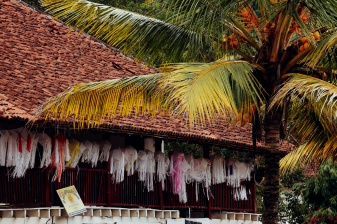


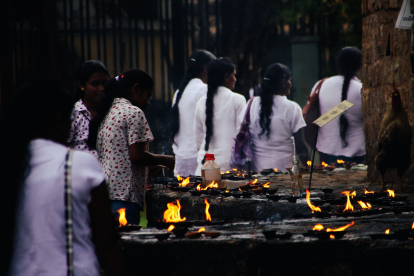
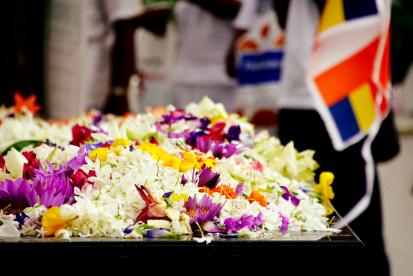
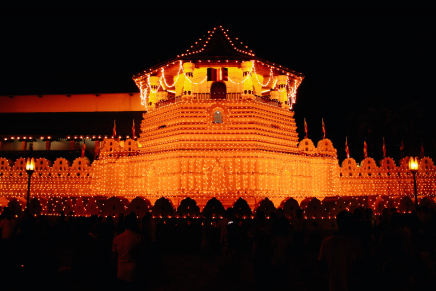
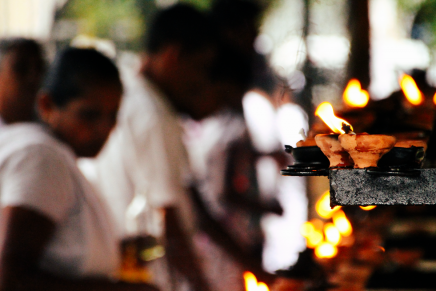
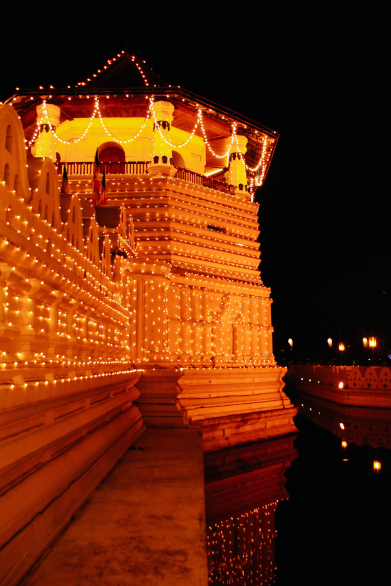

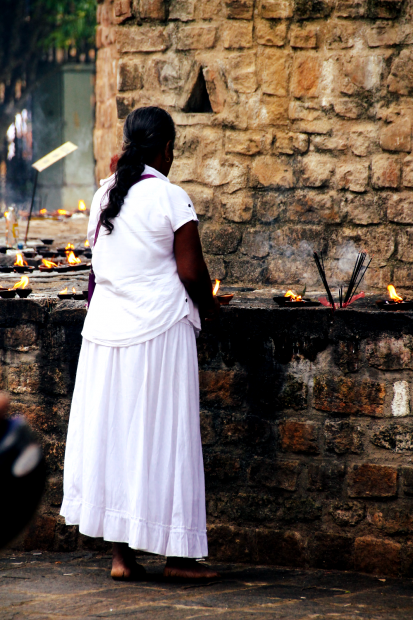

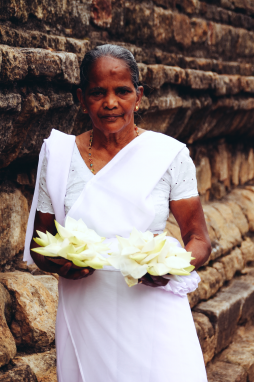
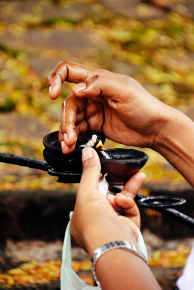
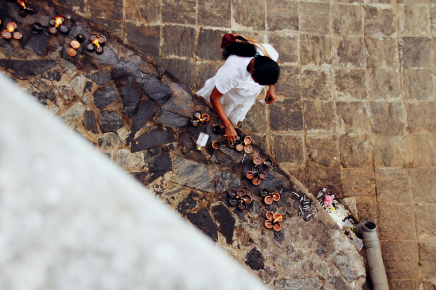
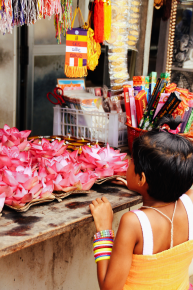
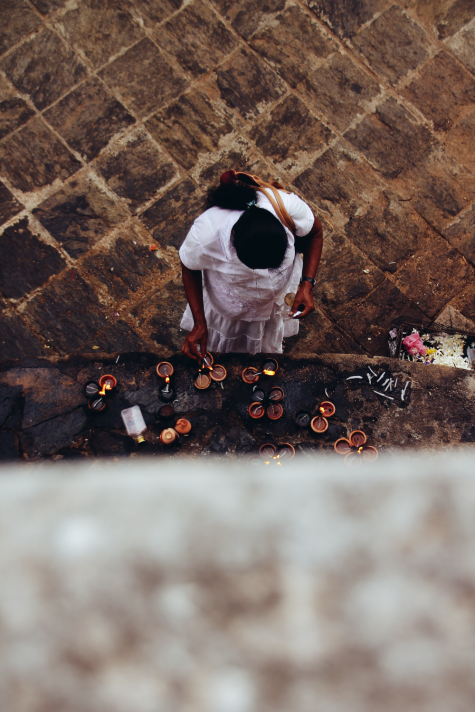
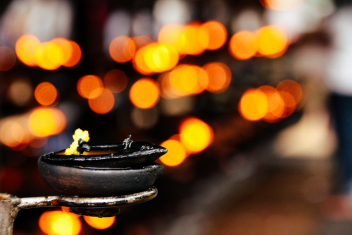
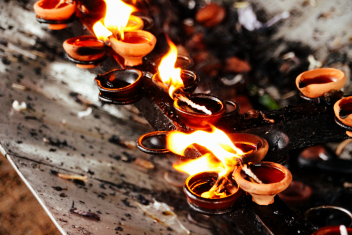
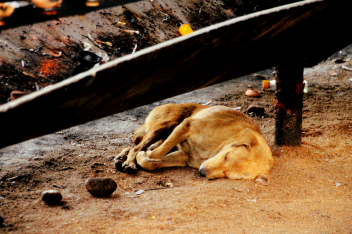
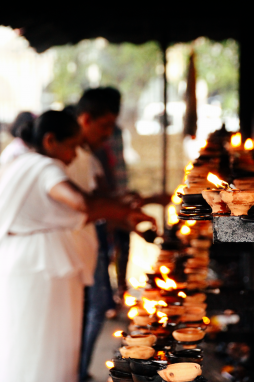
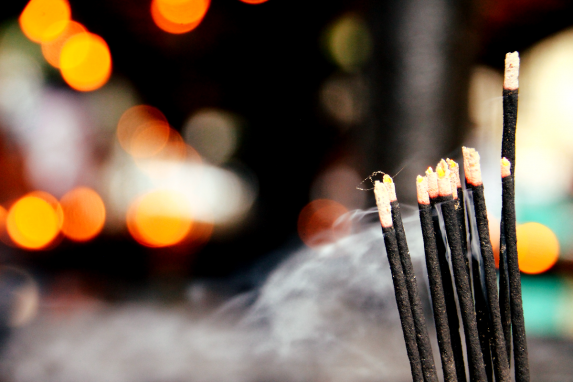
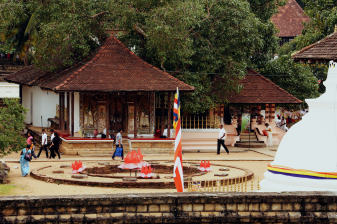
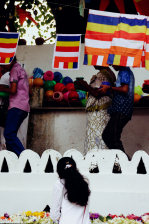
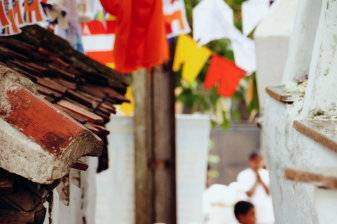
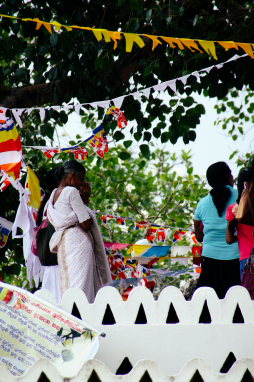
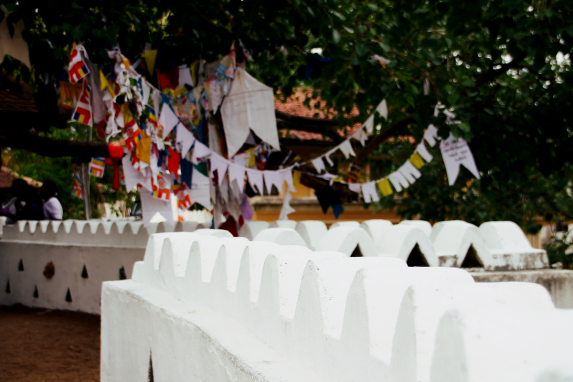
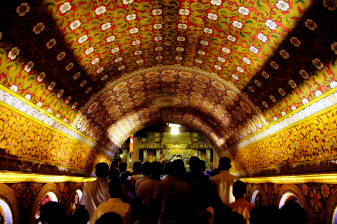
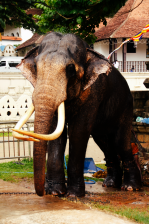
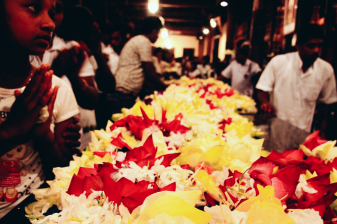
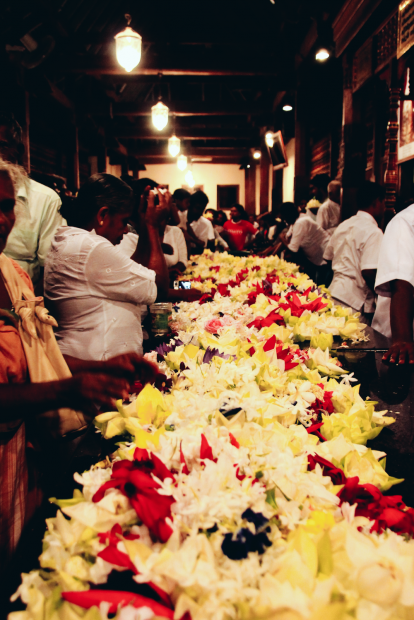
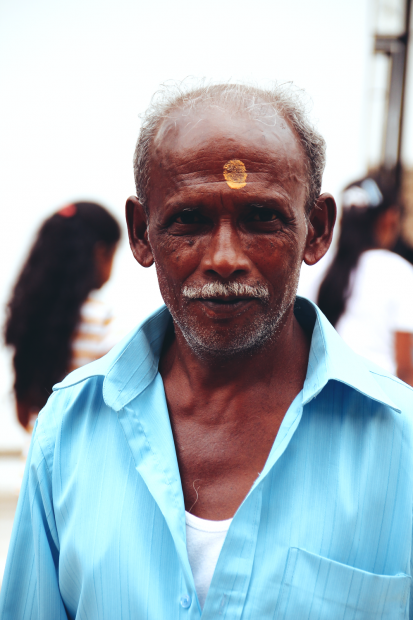

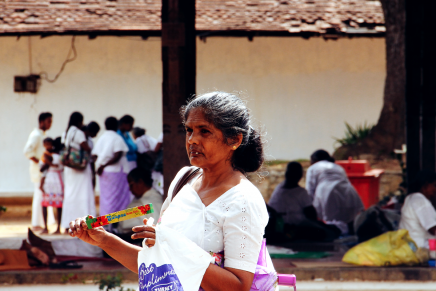
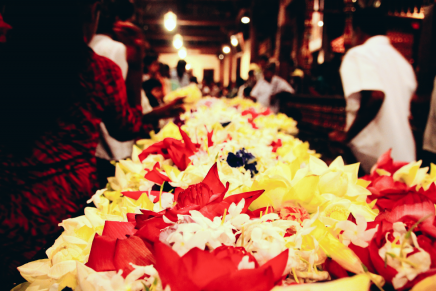

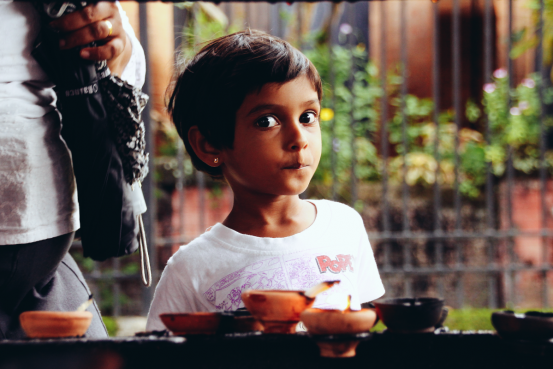
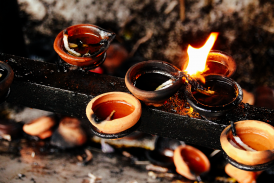
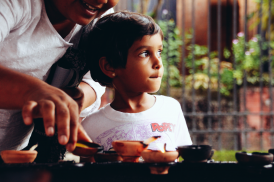
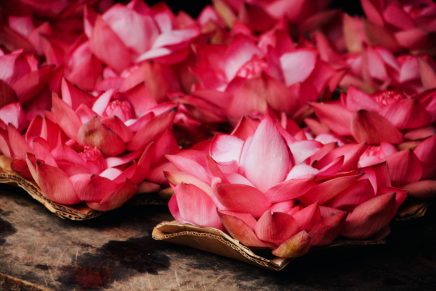
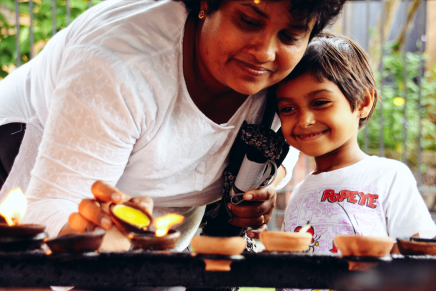

2 Kommentare